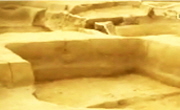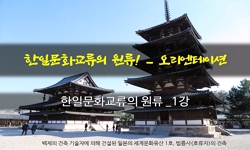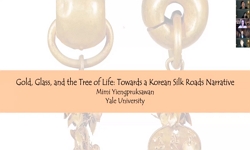사비기에 제작된 백제의 목간은 대부분 부여 지역의 15곳과 나주 복암리에서 출토되었다. 부여목간은 6~7세기 도성 관리들의 글씨를, 나주목간은 7세기 지방 관리들의 글씨를 보여 주므로 두 ...
http://chineseinput.net/에서 pinyin(병음)방식으로 중국어를 변환할 수 있습니다.
변환된 중국어를 복사하여 사용하시면 됩니다.
- 中文 을 입력하시려면 zhongwen을 입력하시고 space를누르시면됩니다.
- 北京 을 입력하시려면 beijing을 입력하시고 space를 누르시면 됩니다.
https://www.riss.kr/link?id=A106962216
- 저자
- 발행기관
- 학술지명
- 권호사항
-
발행연도
2020
-
작성언어
Korean
-
주제어
백제 ; 부여목간 ; 나주목간 ; 능산리사지 ; 복암리 ; 소자운 ; Baekje ; wooden tablets of Buyeo ; wooden tablets of Naju ; Neungsan-ri temple site ; Bogamri ; Xiao Ziyun
-
등재정보
KCI등재
-
자료형태
학술저널
-
수록면
87-109(23쪽)
-
KCI 피인용횟수
0
- 제공처
-
0
상세조회 -
0
다운로드
부가정보
국문 초록 (Abstract)
사비기에 제작된 백제의 목간은 대부분 부여 지역의 15곳과 나주 복암리에서 출토되었다. 부여목간은 6~7세기 도성 관리들의 글씨를, 나주목간은 7세기 지방 관리들의 글씨를 보여 주므로 두 지역의 목간 글씨를 비교해 보면 백제 京鄕 서예의 특징과 연관성을 알 수 있다.
80여 점의 부여목간에는 해서, 행서, 초서가 각각 또는 혼용되어져 있다. 북위 해서의 웅강함, 남조 행초서의 유려함 등 서풍도 다양하여 도성의 서사 교육 수준이 상당히 높았음을 알 수 있다. 능산리사지 출토<‘支藥兒食米記’목간>의 노련한 행서는 거침이 없어 자연스럽고, 부드러우면서 힘차 백제의 미감이 가득하다. 궁남지의 문서목간은 변화무쌍하면서 능숙하고, 관북리 목간의 웅강무밀한 해서는 백제의 남북조 취향을 드러낸다. 감사 인사를 담은 동남리의 꼬리표목간은 드물게 유창한 초서로 쓰였다. 618년의 환곡 기록을 적은 쌍북리 출토 <‘佐官貸食記’목간>은 용도에 맞게 정연한 해서로 쓰였지만 동시에 획의 강약과 길게 늘어진 파책에서 변화를 주었다. 구아리 출토 해서 목간의 단아하면서 절제된 서풍과 행서 목간의 유려하면서 자유분방한 서풍은 대조를 이루지만 각기 다른 분위기로 특출하다.
13점의 나주 복암리 목간의 해서에는 행서 필의가, 행서에는 해서와 초서 필의가 있다. 문서목간의 행서도 자간이 일정하고 질서정연하다. 특히 목간 1호와 12호의 글씨는 부여목간만큼 유려하지도, 변화무쌍하지도 않지만 그 전아미, 절제미, 노련미에는 부여목간이 범접할 수 없는 오묘한 맛이 있다.
두 지역의 목간 글씨는 다를 뿐 우열을 가릴 수는 없다. 이는 나주목간 글씨가 부여목간 글씨에 견줄 수 있을지언정 결코 뒤지지 않음을 의미한다. 나주목간 글씨의 출중함은 중앙의 영향도 있겠지만 중국과의 직접 교류를 통한 영향일 수도 있다. 따라서 나주목간 글씨의 특출함은 부여목간의 글씨와는 별개로 나주 관리의 독창성으로 보아도 무방하다.
다국어 초록 (Multilingual Abstract)
The wooden tablets of Baekje made in the Sabi period were excavated at the fifteen places in Buyeo and Naju Bogam-ri. Those of Buyeo show the writings of the capital officials in the 6th and 7th centuries and those of Naju Bogam-ri those of the local ...
The wooden tablets of Baekje made in the Sabi period were excavated at the fifteen places in Buyeo and Naju Bogam-ri. Those of Buyeo show the writings of the capital officials in the 6th and 7th centuries and those of Naju Bogam-ri those of the local officials in the 7th century. We can realize the characteristic and relationship of the capital and local calligraphy of Baekje through the comparison of the writings of the two places.
More than eighty wooden tablets of Buyeo were written in the regular, running, and draft scripts. The various styles such as the powerful and dense regular script of the Northern Wei and flowing and elegant running and draft scripts of the album calligraphy of the Southern dynasties tell us the highlevel writing education of the capital in Baekje.
The masterly running script on ‘Jiyakasikmi-gi’ wooden tablet of Neungsan-ri temple site is inexorable and natural as well as soft and powerful, so it was filled with the beauty favor of Baekje. The writing of document wooden tablet of Gungnamji is changeable and skillful, and the regular script on the wooden tablet of Gwanbuk-ri reveals the style of the Southern and Northern dynasties. The tag wooden tablet of Dongnam-ri carrying thank you greeting was rarely written in the fluent draft script. The writing of ‘Jwagwandaesik-gi’ wooden tablet of Ssangbuk-ri is changeable in the strength and weakness of stroke although written in the regular script. The graceful and restraint regular script and fluent and carefree running script on the wooden tablets of Gua-ri are contrastive and at the same time exceptional each.
The thirteen wooden tablets of Naju Bogam-ri were written in the regular script with the running brush touch and the running script with the regular and draft brush touches. The running script on the document wooden tablets is in good order. Although the writings of the wooden tablets 1 and 2 are not as fluent and changeable as those of the wooden tablets of Buyeo, there is a peculiar taste that the wooden tablets of Buyeo cannot approach.
The writings of the wooden tablets of the two places are only different, and there is no superiority and inferiority between them. It means that the writings of the local Naju can be in comparison with those of the capital Buyoe but not behind. The excellence of the writings of Naju seems to be influenced by the capital and to be originated from the direct interchange with China simultaneously. It can be therefore said the superiority of them is its own creativity.
목차 (Table of Contents)
- 국문초록
- I. 머리말
- II. 부여목간과 나주목간의 개관
- III. 부여목간과 나주목간의 서풍
- IV. 맺음말
- 국문초록
- I. 머리말
- II. 부여목간과 나주목간의 개관
- III. 부여목간과 나주목간의 서풍
- IV. 맺음말
- 참고문헌
- Abstract
참고문헌 (Reference)
1 김창석, "羅州 伏岩里 출토 木簡 연구의 쟁점과 과제" 백제문화연구소 (45) : 99-127, 2011
2 김성범, "羅州 伏岩里 木簡의 判讀과 釋讀" 한국목간학회 5 : 2010
3 윤선태, "羅州 伏岩里 出土 百濟木簡의 判讀과 用途 分析 -7세기 초 백제의 지방지배와 관련하여-" 백제연구소 (56) : 53-74, 2012
4 국립가야문화재연구소, "한국의 고대목간" 2006
5 橋本緊, "윤선태 著 『목간이 들려주는 백제 이야기』(주류성, 2007년)에 대하여" 한국목간학회 2 : 2008
6 정현숙, "삼국시대의 서예" 일조각 2018
7 김성식, "부여 쌍북리 56번지 사비한옥마을 조성부지 유적 출토 목간" 한국목간학회 (21) : 341-353, 2018
8 심상육, "부여 구아리 319 유적 출토 편지목간의 이해" 한국목간학회 (15) : 45-63, 2015
9 심상육, "부여 ‘중앙성결교회유적’ 및 ‘뒷개유적’ 출토 목간 보고" 한국목간학회 7 : 2011
10 이용현, "백제의 문화와 생활" 충청남도역사문화연구원 2007
1 김창석, "羅州 伏岩里 출토 木簡 연구의 쟁점과 과제" 백제문화연구소 (45) : 99-127, 2011
2 김성범, "羅州 伏岩里 木簡의 判讀과 釋讀" 한국목간학회 5 : 2010
3 윤선태, "羅州 伏岩里 出土 百濟木簡의 判讀과 用途 分析 -7세기 초 백제의 지방지배와 관련하여-" 백제연구소 (56) : 53-74, 2012
4 국립가야문화재연구소, "한국의 고대목간" 2006
5 橋本緊, "윤선태 著 『목간이 들려주는 백제 이야기』(주류성, 2007년)에 대하여" 한국목간학회 2 : 2008
6 정현숙, "삼국시대의 서예" 일조각 2018
7 김성식, "부여 쌍북리 56번지 사비한옥마을 조성부지 유적 출토 목간" 한국목간학회 (21) : 341-353, 2018
8 심상육, "부여 구아리 319 유적 출토 편지목간의 이해" 한국목간학회 (15) : 45-63, 2015
9 심상육, "부여 ‘중앙성결교회유적’ 및 ‘뒷개유적’ 출토 목간 보고" 한국목간학회 7 : 2011
10 이용현, "백제의 문화와 생활" 충청남도역사문화연구원 2007
11 충청남도역사문화연구원, "백제의 문화와 생활" 2007
12 노중국, "백제의 대외 교섭과 교류" 지식산업사 2012
13 이병호, "백제 불교 사원의 성립과 전개" 사회평론아카데미 2014
14 국립중앙박물관, "문자, 그 이후, 한국고대문자전" 2011
15 윤선태, "목간이 들려주는 백제 이야기" 주류성 2007
16 국립나주문화재연구소, "나주 복암리유적 Ⅰ, 1∼3차발굴조사보고서" 2010
17 이용현, "나주 복암리 목간 연구 현황과 전망" 한국목간학회 10 : 2013
18 국립부여박물관, "나무 속 암호, 목간" 예맥 2009
19 권인한, "고대한국 습서 목간의 사례와 그 의미" 한국목간학회 11 : 2013
20 平川南, "道祖神 신앙의 원류-고대 길의 제사와 양물형 목제품" 한국목간학회 2 : 2008
21 윤선태, "百濟의 ‘九九段’ 木簡과 術數學" 한국목간학회 (17) : 13-37, 2016
22 이성배, "百濟木簡의 書體에 대한 一考" 한국목간학회 7 : 2011
23 손환일, "百濟木簡 <支藥兒食米記>와 <佐官貸食記>의 文體와 書體" 신라사학회 (18) : 231-266, 2010
24 이성배, "百濟書藝와 木簡의 書風" 백제연구소 (40) : 233-256, 2004
25 손환일, "百濟 木簡 『佐官貸食記』의 分類體系와 書體" 한국사상문화학회 (43) : 97-124, 2008
26 손환일, "百濟 九九段의 記錄體系와 書體 - <扶餘雙北里出土九九段木簡>과 <傳大田月平洞山城收拾九九段蓋瓦>를 중심으로 -" 한국사학사학회 (33) : 45-70, 2016
27 정현숙, "百濟 <砂宅智積碑>의 書風과 그 形成背景" 백제연구소 (56) : 75-112, 2012
28 이병호, "扶餘 陵山里 出土 木簡의 性格" 한국목간학회 1 : 2008
29 홍승우, "扶餘 지역 출토 백제 목간의 연구와 현황" 한국목간학회 10 : 2013
30 이판섭, "扶餘 雙北里 현내들·北浦유적의 조사 성과-현내들유적 출토 百濟木簡의 소개-" 한국목간학회 1 : 2008
31 "南齊書"
32 "南史"
33 "三國史記"
34 김창석, "7세기 초 영산강(榮山江) 유역의 호구(戶口)와 농작(農作) -나주(羅州) 복암리(伏岩里) 목간(木簡)의 분석" 백제학회 (6) : 141-167, 2011
35 국립나주문화재연구소, "6~7세기 영산강유역과 백제" 2010
36 윤선태, "6~7세기 영산강유역과 백제" 국립나주문화재연구소·동신대학교문화박물관 2010
37 김낙중, "5∼6世紀 榮山江流域 政治體의 性格-羅州 伏岩里 3號墳 出土 威勢品分析-" 충남대학교 백제연구소 32 : 2000
동일학술지(권/호) 다른 논문
-
사비기 백제의 對中관계와 문화교류 - 도교 · 불교를 중심으로 -
- 한국목간학회
- 박지현(Park, Ji-hyun)
- 2020
- KCI등재
-
- 한국목간학회
- 정동준(Jeong, Dong-jun)
- 2020
- KCI등재
-
- 한국목간학회
- 이장웅(Lee, Jang-Woong)
- 2020
- KCI등재
-
- 한국목간학회
- 河上麻由子(Mayuko Kawakami)
- 2020
- KCI등재






 DBpia
DBpia







